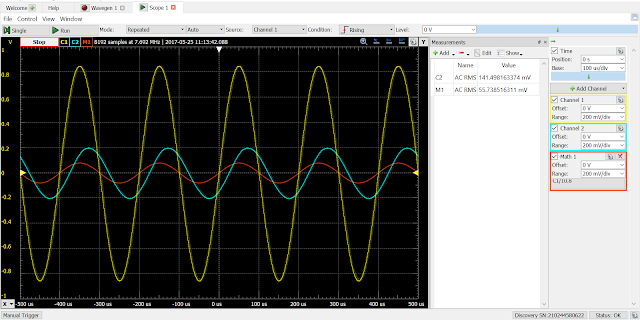Introduction: In this lab, we calculated current for RL circuit ran with ac current with it's voltage source. After that, we divided function of current with voltage to get gain of the circuit in three different angular momentum. We built the circuit and compared with calculated values.
 |
| We calculated gain of circuit when ω is 47k rads per second is 0.015, when it's 4.7k rad/s(ω/10), it's 0.0212, and 0.00212 when its 470k rad/s(10ω). |
Unfortunately, we did not take picture of built circuit.
 |
| 4.7k rad/s, gain of 0.0212 (Brown line) (it's shown it's at 0.212 because we are showing 10 times of measured value using 0.02A/div (Voltages are at 0.202V/div)) |
 |
| 47k rad/s, gain of 0.015 |
 |
| 470k rad/s, gain of 0.00212 |
Summary: This lab gave us our expected values. every gains matched our calculated values. Notable points in this lab were at 4.7k rad/s, V_in and current were inphase, at 47k rad/s, they were all off-phase, and when
ω was at 470k rad/s, V_in and V_L were in-phase.



















